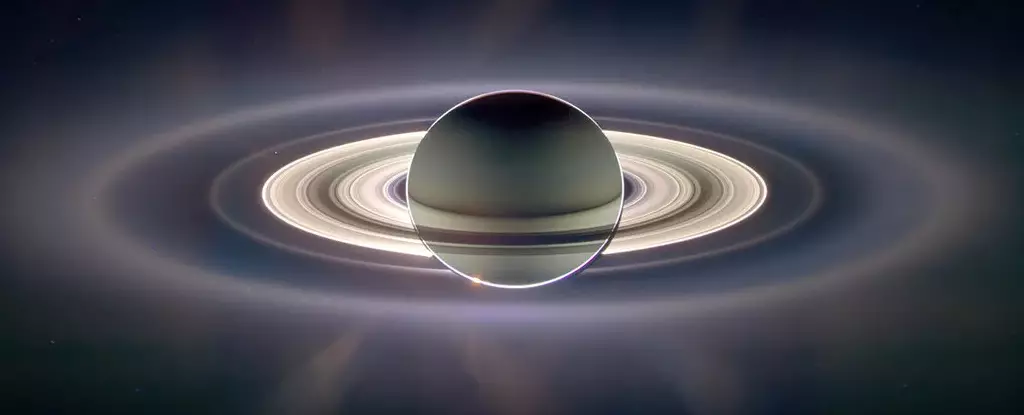Saturn, the jewel of the Solar System, is renowned for its breathtaking rings, comprised of ice and dust that dazzle with their beauty and complexity. For years, scientists believed these rings had formed relatively recently, estimating their age between 100 to 400 million years. However, groundbreaking research led by a team from the Institute of Science Tokyo and the French National Centre for Scientific Research challenges this view, suggesting that these magnificent structures may be far older than previously thought.
When the Cassini spacecraft arrived at Saturn in 2004, it opened a window into an alien world. The data collected suggested a paradox: despite being subjected to a relentless bombardment of micrometeoroids for billions of years, Saturn’s rings were unexpectedly pristine. This led to a radical conclusion — that they might be young in geological terms. The lack of dust accumulation was baffling and triggered a myriad of hypotheses regarding their formation and longevity.
Planetary scientist Ryuki Hyodo sheds light on this mystery in a recent study. According to Hyodo, the initial interpretation of the rings’ cleanliness being indicative of youth was simplistic. “Our theoretical work shows that a clean appearance does not necessarily mean the rings are young,” he asserts, emphasizing the importance of delving deeper into the data gathered by Cassini.
The research team investigated how micrometeoroid impacts could affect the rings. It turns out that microscopic particles traveling at speeds over 25 kilometers per second collide with larger ice chunks that form the rings. Instead of resulting in a dusty, contaminated surface, these impacts produce a fascinating phenomenon. The high-energy collisions vaporize the micrometeoroids and a small portion of the ice surface, leading to the formation of charged nanoparticles. These charged particles are influenced by Saturn’s magnetic field, which ultimately prevents significant accumulation of dust within the rings.
This nuanced understanding of micrometeoroid collisions is crucial. It illuminates how the delicate balance of forces in the Saturnian system helps maintain the rings’ striking clarity over extended periods. With this revised perspective, scientists now entertain the possibility that Saturn’s rings could be billions of years old, constructed from debris that spiraled around the planet shortly after the Solar System’s formation.
If the rings are indeed ancient, the consequences extend beyond Saturn itself. Other gas giants in the Solar System, such as Jupiter and Uranus, possess ring systems, albeit less prominent. Understanding the longevity of Saturn’s rings can reshape our perceptions of ring dynamics across planetary bodies. Furthermore, as researchers continue to identify exoplanets with gaseous characteristics, the knowledge gained from Saturn may provide insights into the presence of rings around these distant worlds.
The renewed hypotheses about the age of Saturn’s rings have significant implications for future planetary exploration. If presented with the notion that the rings could be ancient rather than ephemeral, space missions may prioritize the study of such structures, recognizing their potential to reveal critical details about planetary formation and evolution.
The journey of discovery does not end here. Hyodo and his colleagues are embarking on experimental work to corroborate their theoretical models with practical observations. By simulating micrometeoroid impacts on ice samples, these experiments will enhance our understanding of ring dynamics and their interactions with space debris. Additionally, the team is gearing up for involvement in upcoming Japanese planetary missions that will focus more closely on Saturn’s rings, promising deeper insights into their mysteries.
The study of Saturn’s rings serves as a reminder of the complexities and unexpected revelations that await in the cosmos. As scientists continue to peel back the layers of mystery surrounding Saturn, the fundamental processes that have governed the formation and preservation of its rings will provide not just answers about our own Solar System, but potentially about the myriad of solar systems scattered across the universe.
The perspective on Saturn’s rings is shifting from a narrative of youth to one of ancient resilience. Each finding serves to inspire curiosity and beckons humanity to dig deeper into the cosmic tapestry woven around our celestial neighbors. Who knows what additional truths may emerge as exploration pushes our boundaries and expands our horizons in the quest for knowledge?


Leave a Reply